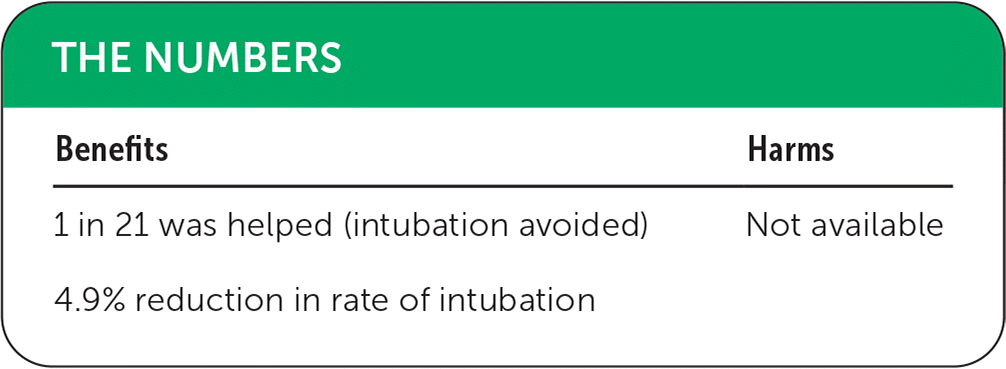
Am Fam Physician. 2022;106(2):online
Author disclosure: No relevant financial relationships.

Details for This Review
Study Population: 1,985 patients from 10 randomized controlled trials (RCTs) who had acute hypoxemic respiratory failure due to COVID-19
Efficacy End Points: Primary outcome was cumulative intubation risk; secondary outcomes included all-cause mortality, the need for escalating respiratory support, need for transfer to the intensive care unit (ICU), and duration of ICU and hospital stay
Harm End Points: Cardiac arrest, vomiting, and central or arterial line dislodgement

| Green | Benefits greater than harms |
| Yellow | Unclear benefits |
| Red | No benefits |
| Black | Harms greater than benefits |
Narrative: Prone positioning may improve oxygenation in intubated patients with acute respiratory distress syndrome.1 Some studies have suggested that prone positioning may prevent the need for intubation in patients with acute hypoxemic respiratory failure who are awake and not intubated.2,3 Physiologically, prone positioning improves lung aeration through recruitment of dorsal alveoli, which reduces blood shunting in areas with collapsed or nonaerated alveoli.4 This practice in patients who are intubated and sedated requires multiple staff members to change the patient's position several times per day and may result in disconnection or dislodgement of central or arterial lines.
Subscribe
From $165- Immediate, unlimited access to all AFP content
- More than 130 CME credits/year
- AAFP app access
- Print delivery available
Issue Access
$59.95- Immediate, unlimited access to this issue's content
- CME credits
- AAFP app access
- Print delivery available
